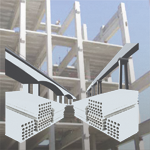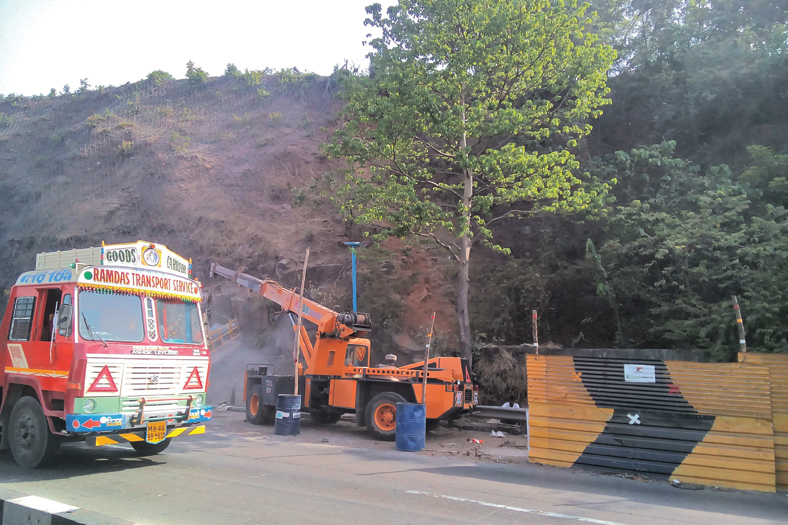Earthquake and precast concrete

Discusses the need for adequate and sound detailing of the connections in precast concrete structures for seismic regions.
Precast industry in India is gaining momentum as a promising construction technique. Experts say that the use of such technology can save up to 64 per cent of time incurred in similar type of project executed with prevailing brick and mortar type of construction. Though precast technology is portable, easy, quick and reliable; what about its performance and its use in seismic regions?
It has been observed that most of the precast structure failures in the seismic regions come with poor designing and inadequate detailing. Therefore, there is the need for adequate and sound detailing of the connections in precast concrete structures.
All the precast buildings can be designed by considering the effect of seismic forces as per the guidelines of regional codes as same as regular cast in situ structures. There is no change in the analysis of seismic forces. In India, the seismic analysis of the precast structures is done as per the guidelines of the IS: 1893-2002. Shridharan CN, Head-Technical and Marketing, Preca Solutions India Pvt Ltd says, “In precast structures, seismic forces will be resisted by the connections in between the elements. The design and detailing of connections is very important in the precast design. There is numerous proven connection details are available in PCI manual.”
While speaking on how connections are weak point in the precast concrete structures, Siddharth Sharma, President, Precast division, Magicrete Building Solutions Pvt Ltd says, “The connections are the weak points in the structural system and have to withstand lateral seismic forces, they make the structure monolithic and maintain structural integrity. Designing reliable and economic connections is the common problem faced by the precast construction industry and need of the hour. Precast concrete connections must meet a variety of design, performance and other criteria. Their principal function is to transfer forces across joints so that interaction between precast units is obtained.”
Speaking about the designing of the connections in precast Sharma says, “The design of connections is not only a question of choosing appropriate connecting devices. The connection in its whole must be regarded, including joints, joint fill, joint faces and the end zones of the precast units. The end zones achieve the force transfer from the connecting devices into the units and must often be detailed and reinforced with regard to the introduction of forces and possible deformations.”
The detailing of connections should also fulfil requirements with respect to the manufacture, transport and erection of the precast units. Complex connections may interfere with efficient production and erection of the units. “Even the advantage of precast construction may be lost by the use of inadequate connections and therefore the experience of the manufacturer concerning good, appropriate and simple connections should be used in the design” suggests Sharma.
“The selection of suitable connection details is depends on the seismic analysis zone wise and the height of the structure. Even if the building height is more than 40m and located in zone 3 , 4 and 5, the detailed dynamic analysis is recommended. Check for the drift and torsion is anticipated for all the buildings,” points out Shridharan.
The assumption in the precast design is that all the lateral forces are transferred to the foundation by means of diaphragm actions. The diaphragm action transmitted through the screed or topping concrete provided on top of the precast floor or slab elements. “The proper diaphragm analysis shall be carried out as per the guidelines of the PCI manual. The suitability of connection details is depends upon the lateral forces. So the designer should be more are full in selecting the connection details for the structures,” suggests Shridharan.
Earthquake resistant design In the design of earthquake resistant structures incorporating precast concrete elements the main difficulty has been to find efficient and economical methods for connecting the precast concrete members together to give adequate strength, stiffness and ductility.
The safety standards agree that, in normal cases, the structures should not collapse under the strongest expected earthquakes but could undergo even large damage, whereas for frequent low-intensity earthquakes, there should not be any damage. Accepting damage for earthquakes having very long return periods, compared with the lifespan of the structure, is reasonable and economic.
The relevant feature permitting the structure not to collapse despite large damage, i.e. large deformations, is the ‘ductility’, allowing ultimate design forces lower than those which would appear in the undamaged structure during a given earthquake. The ductility is the ability of undergoing large plastic deformations, i.e., during severe earthquakes the structure should be capable of deforming in the post elastic range to lateral displacements of several times the displacement at first yield during several cycles of seismic loading without a significant loss in strength.
The structures are assigned ‘ductility classes’ and ‘coefficients of structure’ with regard to material properties, cross-section design and detailing. Beyond the classification, designers should bear in mind the concept of ductility and fit the structure to it. Symmetry and regularity of the structure definitely help the overall ductility.
Sharma advises, “It is always advisable to design and detail the connections in order to avoid brittle failures in case the connection is overloaded, for instance due to underestimated forces. Ductile behaviour of the connections is desirable. Ductility should not be confused with deformability and not only associated with transfer of bending moments. In the case of overloading, a ductile connection will reach its yield and start to deform plastically. The plastic displacement will give the necessary relief of the restraint force and a new state of equilibrium will be reached. Large displacements will result, but the force transfer ability is still there and brittle failures and damage in connection zones are prevented. The principle of balanced design for ductility can be applied in order to secure ductile behaviour of connections. The aim with balanced design is to ensure that the full plastic deformability of the ductile links can be reached before the connection fails.”
Additionally Sharma adds, “When it comes to earthquake performance, the fact is that “bad news” is more widely publicised than “good news.” However, it can be concluded that with proper ductile detailing of connections precast structural system can be expected to behave fairly satisfactory under earthquake loading.”
Conclusion
Precast construction technologies are all set to gear up the industry. In the coming years the industry will demand for more reliable and strong and well structured precast structures. Therefore it is the need of the hour to design the structure and chose the connecting devices carefully to avoid the precast structure failure.
——————————
Even the advantage of precast construction may be lost by the use of inadequate connections…
Siddharth Sharma, President, Precast division, Magicrete Building Solutions
————
The design and detailing of connections is very important in the precast design.
Shridharan C N, Head-Technical & Marketing, Preca Solutions India
52
Cookie Consent
We use cookies to personalize your experience. By continuing to visit this website you agree to our Terms & Conditions, Privacy Policy and Cookie Policy.









